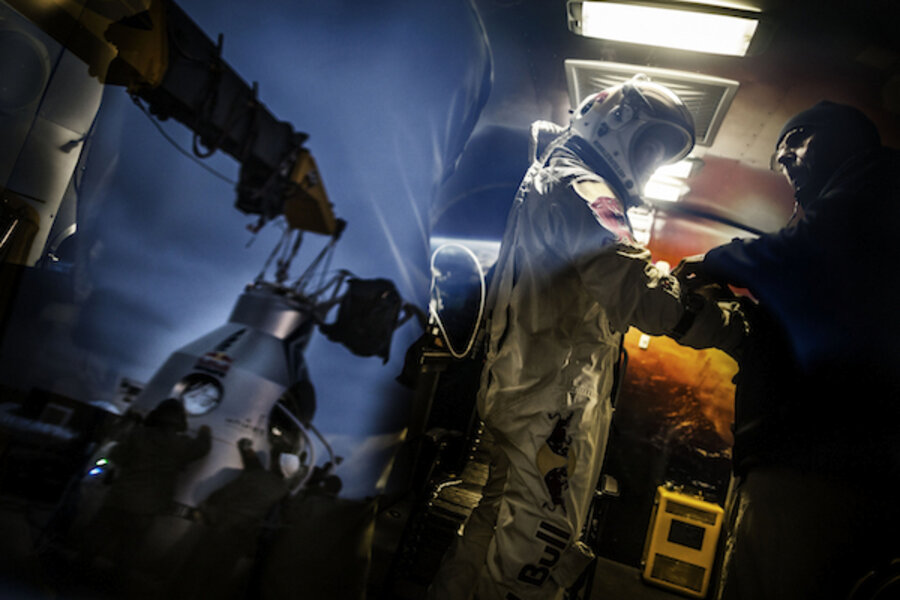Bad weather scuttles supersonic jump from the edge of space
Loading...
At 9 a.m. on Tuesday, Felix Baumgartner, an extreme skydiver from Austria, was scheduled to jump out of a balloon hovering 23 miles over the New Mexico desert, and plummet toward earth at hundreds of miles an hour – temporarily exceeding the speed of sound. It was a feat dubbed "the greatest action sports exploit yet."
But according to Red Bull, which is sponsoring the so-called "Stratos" project, the jump has been delayed.
"We're on hold, waiting," Sarah Anderson, a spokeswoman for Red Bull, told Reuters in an e-mail. (In an earlier message on the Stratos blog, Red Bull reps said "the wind must be calm enough to allow a safe launch of the 550-ft-tall balloon.") According to Reuters, the Stratos team is hoping that weather will have calmed by 1:30 p.m. EST, allowing the space suit-clad Baumgartner and the balloon to take to the skies.
This is not the first delay for Stratos. On Friday, the launch of the balloon was delayed by a cold front, which would have brought wind and rain, Space.com reported.
In July, during a test run, Baumgartner leapt from a height of more than 96,000 feet (18 miles), and temporarily reached a speed of 536 miles-per-hour. It took Baumgartner approximately 10 minutes to reach the ground from that altitude. "It was a rough couple of days and an exhausting endeavor," Baumgartner said at the time. "I am now really excited. It has always been a dream of mine. Only one more step to go."
Baumgartner is attempting to break the record set by US military pilot Joe Kittinger, who jumped from 102,800 feet back in 1960.
Planning to watch Baumgartner go supersonic? Drop us a line in the comments section. And to receive regular updates on how technology intersects daily life, follow us on Twitter @venturenaut.





